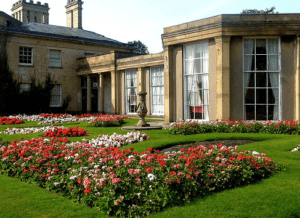10 Stunning Orangery Designs to Transform Your Home in 2025
Looking to add a touch of elegance and value to your property? Want to increase your living space and boost...
Read MoreLast Updated: 23 January 2025

Your local surroundings are a great place to look for inspiration when you’re thinking about renovating your home. Being close to Heaton Park, we thought we’d take a closer look at one of its most iconic features, the orangery at Heaton Hall.
Orangeries were originally used as sheltering places for tender citrus plants during the winter months. They were expensive to build and usually only within the financial reach of the aristocracy. With the growth of global trade and the British Empire, orangeries began to take on a social function, as a place to show off exotic botanical specimens gathered from around the world.
Since the 20th century, orangeries have become much cheaper to build and install, making them a popular feature of British homes. With an elegant design, large glazed area and providing lots of space, orangeries are perfect for adding a touch of period opulence to your home.
Heaton Hall is a grade 1 listed, neo-classical mansion built in 1772 by the 1st Earl of Wilton on the site of an older mansion. The house, which is of a traditional Palladian design, was designed by James Wyatt, one of the best neo-classical and neo-gothic architects of his generation.
The hall itself was actually built in phases. The central wing and the kitchen were completed by 1778 and the east wing by 1789. It was used as a private residence for the Earls of Wilton until 1902 when it was sold to Manchester City Council.
Added to the property in 1823 by the 2nd Earl of Wilton, the Heaton orangery was designed by Lewis Wyatt and is a particularly impressive example of neo-classical architecture.
Lady Mary Stanley, the wife of the 2nd Earl, loved botany and it is thought that the orangery was built for her. With direct access from the east wing of the house, the orangery originally had a grand domed, glazed roof but this was removed when Manchester Council bought the park in the early 20th century.
Lit completely by natural sunlight and overlooking beautiful landscaped gardens, the orangery is the perfect example of aristocratic opulence and is a great place to visit for inspiration if you’re thinking about adding an orangery to your own home.
Looking to add a touch of elegance and value to your property? Want to increase your living space and boost...
Read MoreWhen considering home extensions, orangeries often emerge as a superior choice – and for good reasons that might surprise you....
Read MoreAt Reddish Joinery, we’ve been at the forefront of home improvement trends for over 50 years, and we’re excited to...
Read MoreContemporary orangeries have emerged as a popular home improvement choice, fusing traditional charm and modern sophistication. At Reddish Joinery, we...
Read More